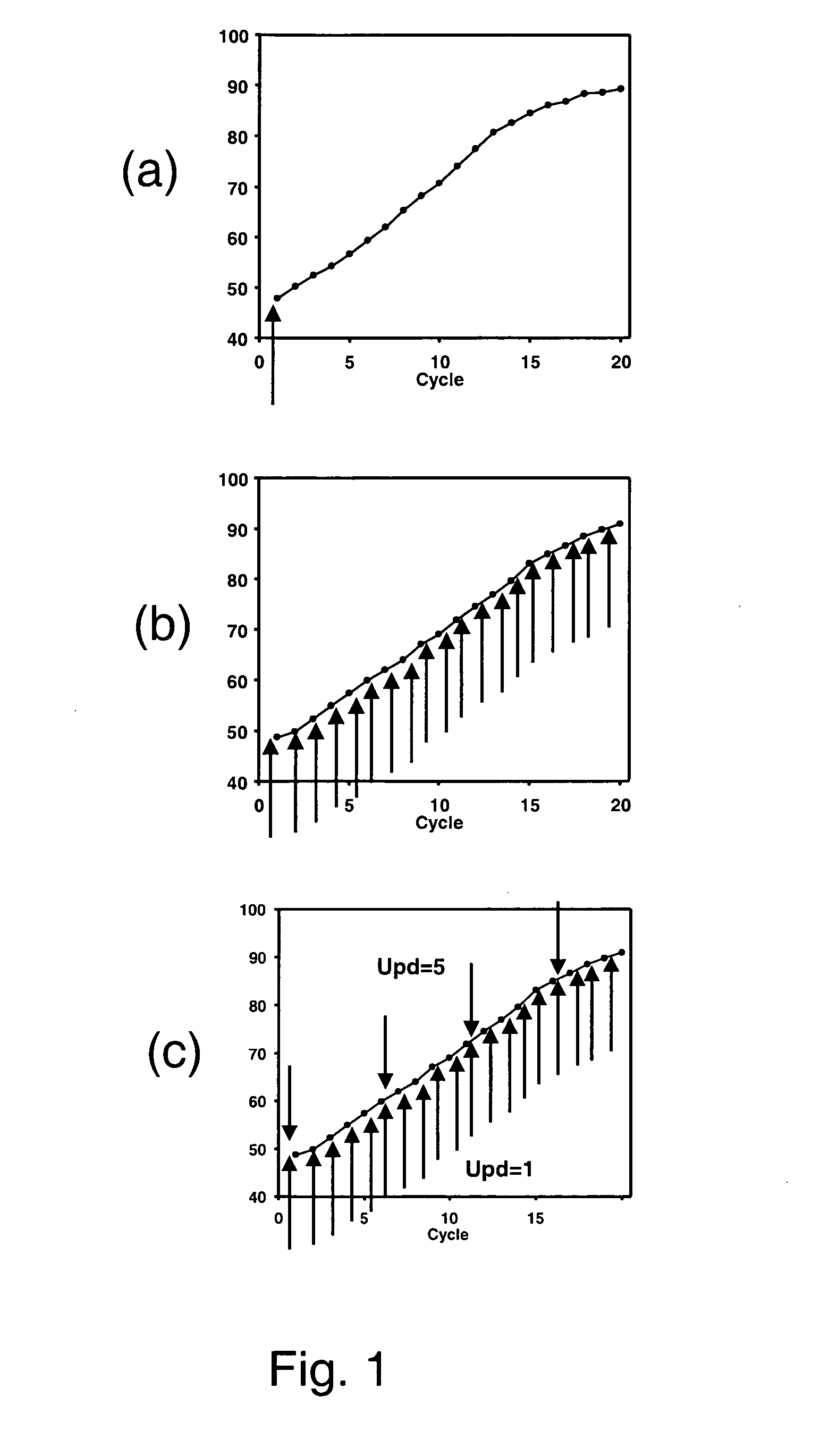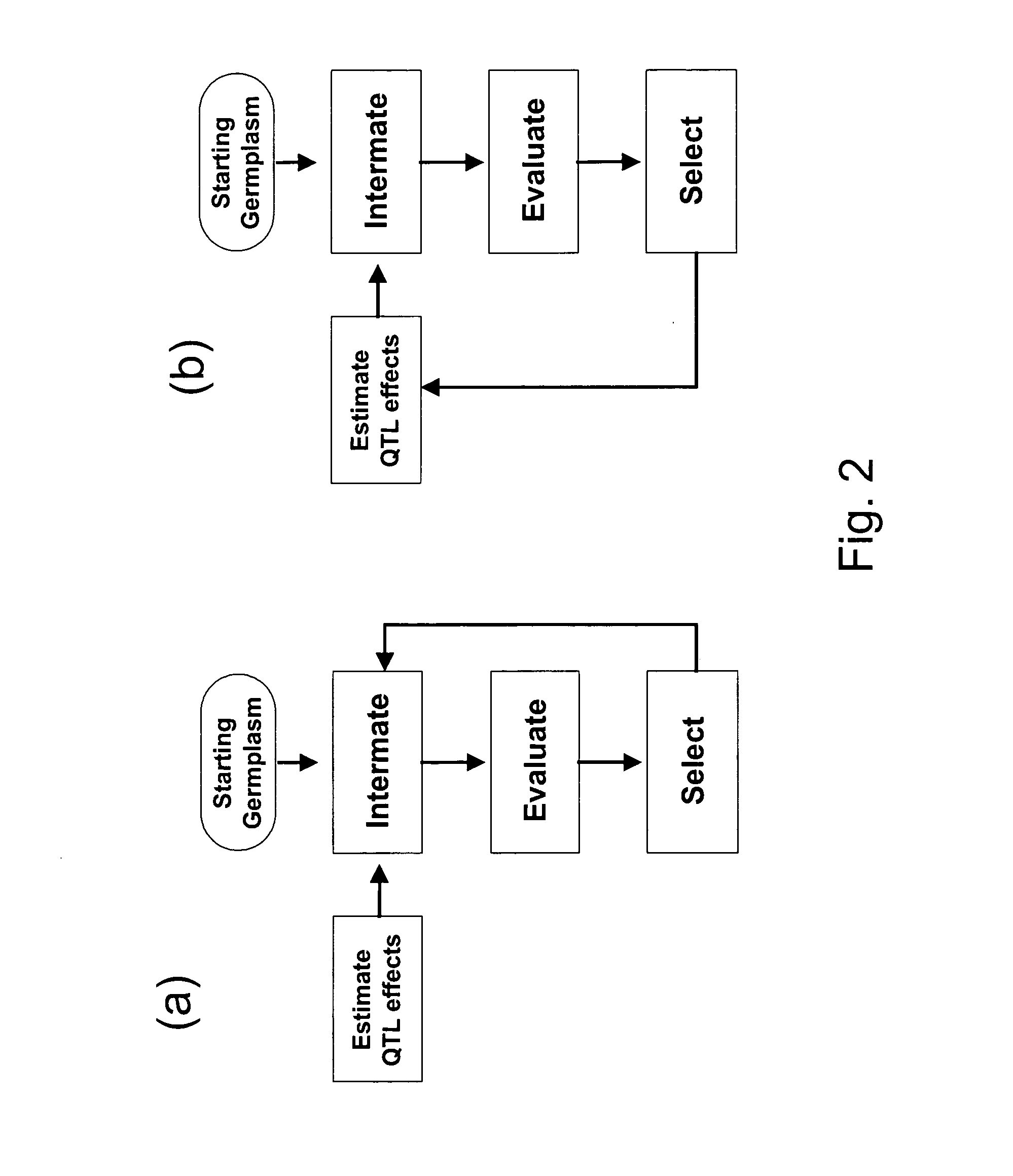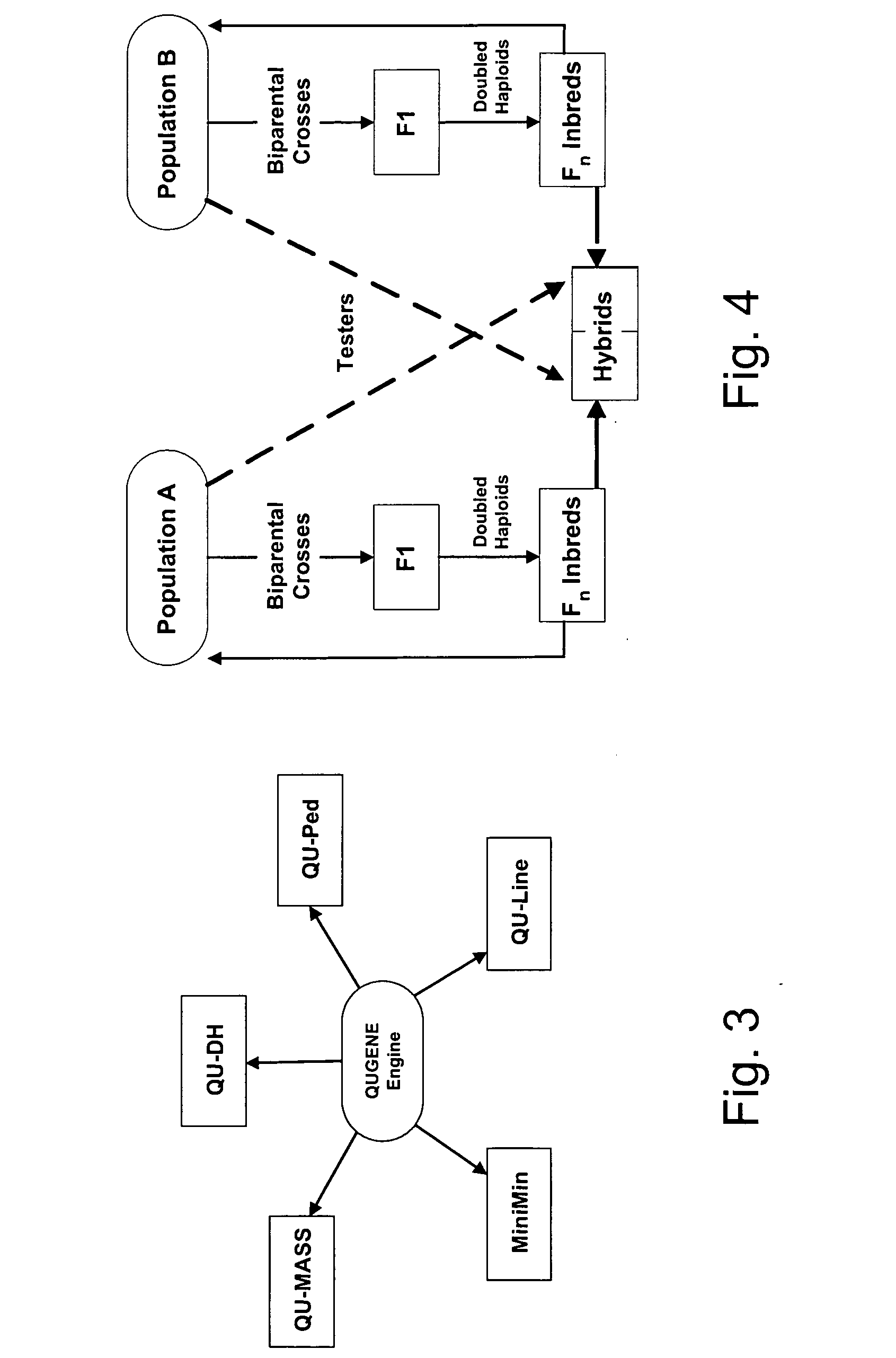QTL "mapping as-you-go"
- Summary
- Abstract
- Description
- Claims
- Application Information
AI Technical Summary
Benefits of technology
Problems solved by technology
Method used
Image
Examples
example 1
Simulation of the Mapping-As-You-Go Strategy
In this simulation, the MiniMin application module was run a series of times using a factorial combination of parameter values from the engine and application module. The MiniMin module implements a reciprocal recurrent breeding strategy as shown in FIG. 4. All genetic models have 24 independently segregating QTL (2 alleles per locus), each of which influences the trait on which selection was conducted.
Genetic effects were defined using the E(NK) notation (Cooper and Podlich, 2002). The value of K indicates the average number of loci that interact with a specified gene. For example, K=0 indicates that no other loci influence the genetic effects of the specified gene, that is, K=0 corresponds to an additive gene system. For K=1, digenic networks are in operation. For K=2, trigenic networks are in operation, etc. Heritability defines the level of error associated with the phenotype. Higher heritability values correspond to lower error le...
example 2
Comparison of Updating at Different Cycle Intervals in the Mapping-As-You-Go Strategy
This simulation investigated the power of the Mapping As-You-Go approach using different intervals of cycles to update QTL information. QTL effects were estimated at the start only, updated every cycle of the breeding program, or updated intermittently over the course of the breeding program (FIG. 1c). As described above, response was considered for a large range of genetic models and breeding scenarios.
As described in Example 1, the MiniMin module was run using a factorial combination of parameter values from the engine and application module. As above, all genetic models have 24 independently segregating QTL (2 alleles per locus), each of which exerts an influence on the phenotype.
Multiple levels of epistasis were evaluated: K=0 (additive) indicates that all genes were defined to have additive effects (i.e. the values of genotypes for one gene were not context dependent on the genotypes of o...
example 3
Application of the Mapping-As-You-Go Strategy to a Crop Growth and Development Model
Computer simulation using the QU-GENE software was employed to evaluate the Mapping As-You-Go approach to marker-assisted selection in a crop growth and development model. Gene-to-phenotype relationships were defined as described in Cooper et al (2002). Briefly, a look-up table of yield phenotypic values was computed prior to the simulation experiment. This table was created using a crop growth and development model to integrate the expression of four component traits (Transpiration Efficiency, Phenology, Osmotic Adjustment, Stay-green) within three general classes of environment type (Severe Terminal Stress, Mid-season Stress, Mild-terminal Stress). Numbers of genes and genetic effects were defined for each of the four component traits. The genetic effects were categorized into expression states for each of the traits. Thus, the gene-to-phenotype model was constructed such that specific genes infl...
PUM
| Property | Measurement | Unit |
|---|---|---|
| Correlation function | aaaaa | aaaaa |
| Linkage disequilibrium | aaaaa | aaaaa |
Abstract
Description
Claims
Application Information
 Login to View More
Login to View More - R&D
- Intellectual Property
- Life Sciences
- Materials
- Tech Scout
- Unparalleled Data Quality
- Higher Quality Content
- 60% Fewer Hallucinations
Browse by: Latest US Patents, China's latest patents, Technical Efficacy Thesaurus, Application Domain, Technology Topic, Popular Technical Reports.
© 2025 PatSnap. All rights reserved.Legal|Privacy policy|Modern Slavery Act Transparency Statement|Sitemap|About US| Contact US: help@patsnap.com



